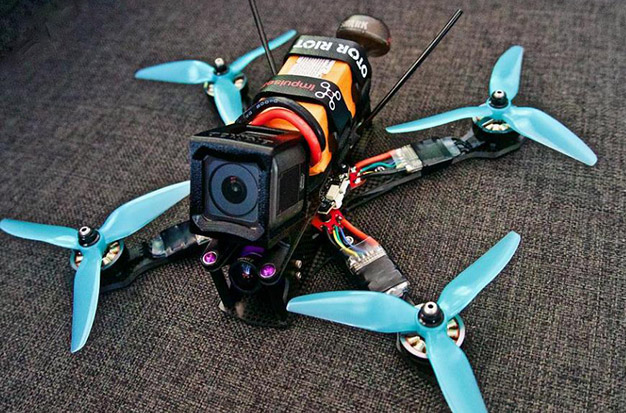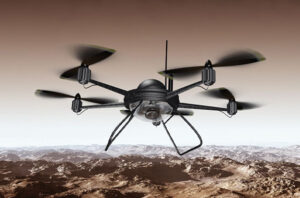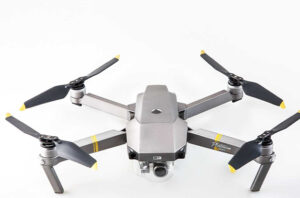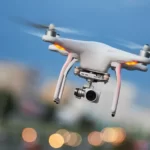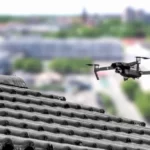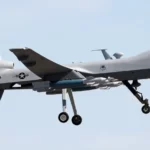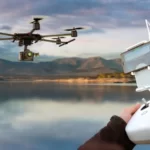We’re glad you’re here to learn everything there is to know about drone racing, a rapidly expanding competitive sport. We’ve compiled all the information to get you to the next level of drone flying, including where it all started, what it is, the best drones to buy, leagues and competitions, and how you can get started yourself. We also have information on watching it if that’s all you want to do.
In 2006, the FAA formally issued the first-ever commercial drone permit, and recreational drone flying has grown in popularity since then. Drone flying can be a rewarding hobby, an important component of a successful business, or even a useful tool for daily work, but there has also been an increase in drone racing for competitive purposes over the years. Additionally, this activity occasionally results in monetary awards, brand agreements, and recognition in the drone racing community.
While all of this is true, the sport is still developing and is still largely underground, but there have been some significant advancements, which we’ll discuss below. So, here we go, everything we know about drone racing and what you should know about drone racing.
Table of Contents
What Is Drone Racing?
Flying drones becomes a competitive sport in drone racing. Goggles or another head-mounted display that is directly connected to a camera on the drone the user is controlling is worn by drone operators. The pilot can navigate from the drone’s point of view thanks to this camera’s ability to stream live video from the drone to the headset.
Due to the fact that the drone operator only sees what the drone sees, these types of drones are known as FPV drones(opens in new tab), or first-person view drones. They merge with the drone, becoming one with it as a result, and fly it as though they were inside of it.
How quickly pilots can maneuver through a course of obstacles is how the sport of drone racing is judged. The drones’ livestreams are displayed on screens all over the course (and occasionally the world) during major events so that spectators can watch and enjoy the action.
What Is Drone Racing With FPV?
In the sport of FPV drone racing, drone pilots navigate a course while looking through goggles that provide a first-person perspective from the drone’s point of view. Because it provides a flying experience that is more immersive than what is possible with conventional RC helicopters or planes, this kind of racing is becoming more and more popular.
To compete in a sanctioned event, pilots must hold an Academy of Model Aeronautics (AMA) certification. The AMA, which oversees all types of RC aircraft, is in charge of establishing safety requirements and regulations for model aviation in the United States.
How Does A Drone Compete In Racing?
If you’ve ever witnessed a racing drone in person, you are aware of how built for speed they are. These drones are svelte and aerodynamic, and they frequently have multiple propellers to aid in achieving high speeds. There are two primary categories of racing drones: those that are built for speed, and those that are built for agility. ‘
Speed drones can cut through the air more easily because they are typically longer and narrower than agility drones. While agility drones are longer and wider, they can make sharp turns without losing too much speed because of their shorter and wider frames.
What Drones Are The Fastest For Racing?
Racing drones can reach speeds of up to 80 mph. Since they must be more nimble and maneuverable, FPV racing drones are typically slower. Nearly 50 mph is the average top speed for FPV racers. Some racing drones are usually built for speed and agility and have a top speed of 100 mph. However, FPV racing drones can travel even more quickly, with some models capable of 150 mph. As a result, in order to keep up with these fast-moving aircraft, pilots must comprehend aerodynamics and drone physics.
What Is The World Record Speed?
In terms of drone speed, 179 mph holds the world record. That’s pretty quick, but some pilots have been known to travel at up to 120 mph. How do these drones manage to travel at such high speeds, then? Well, it all begins with the drone’s design.
Racing drones are made to be light and aerodynamic, which aids in their ability to travel at high speeds. The drone’s speed is greatly influenced by the pilot as well, though. A skilled drone operator will know how to push the drone’s limits and propel it as quickly as possible.
The Importance Of Aero
Aerodynamic performance is crucial for drone racing. The current world record for a racing drone is 179 mph, and well-designed drones can travel faster than 120 mph. But what gives a racing drone its high speed? It all comes down to aerodynamics.
Brushless Motors
Racing drones have brushless motors, which are more effective and powerful than the brushed motors used in most consumer drones. Racing drones can fly so quickly because brushless motors can spin at much higher speeds.
Race Mode Vs Sport Mode
Pilots can push their drones to the limit in Race Mode, reaching top speeds of 120 mph. However, the drone will automatically reduce its speed in Sport Mode to ensure everyone’s safety. Therefore, you’ll want to be in Race Mode if you’re looking for a fast-paced race. Sport Mode is a great place to start, though, if you’re just trying to get a sense of the drone’s capabilities.
Fly More, Fly Faster
The majority of racing drones have a top speed of between 50 and 70 miles per hour, but if you know what you’re doing, you can fly them even faster. The world record is 179 mph, but some pilots have been known to reach speeds of up to 120 mph. As a result, racing drones are undoubtedly the way to go if you’re looking for excitement. Just make sure you fly safely!
What Is The Top Speed Of Racing Drones?
The FAA has established 100 mph as the maximum permitted speed for racing drones. But if you’re an expert, they can go faster. The world record for aviation is 179 mph, but some pilots have been known to reach speeds of up to 120 mph. The FAA does not, however, recommend doing this.
The drones that can be used in drone racing are, as was already mentioned, FPV drones(opens in new tab). There are many different drones from which to choose. You could opt to purchase one of the many drones that are already on the market that are ready to fly, or you could decide to build and configure your own drone to your specifications. You’ll need a setup that prioritizes performance, speed, and agility for drone racing.
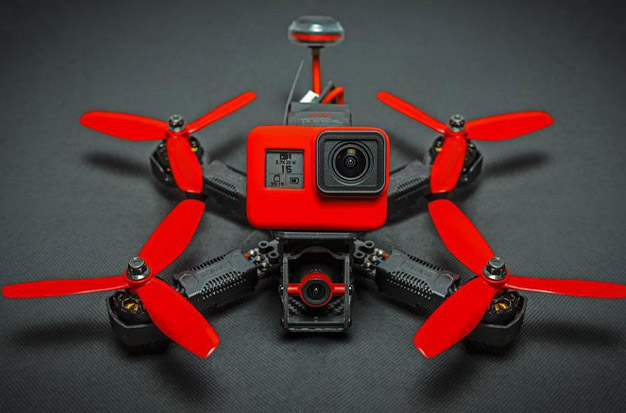
How Fast Are FPV Racing Drones?
Drones used for FPV racing can go up to 100 miles per hour. For those taking part, this makes for a very quick and thrilling race experience. FPV racing can be done with a few different types of drones. Each has strengths and weaknesses.
The quadcopter is the most popular kind of drone for FPV racing. With four rotors, this drone flies very steadily. It can also move at great speeds without much difficulty.
The hexacopter is an additional popular choice for FPV racing. This drone, which has six rotors, has an even higher top speed than a quadcopter. In windy conditions, it is, however, less stable.
As FPV racing becomes more and more popular, mini drones are another option. Due to their small size and light weight, these drones move quickly and are very maneuverable. They can also maneuver in confined spaces, making them ideal for tiny indoor tracks.
Battery life should be considered when selecting a drone for FPV racing. Most drones have a maximum flight time of five minutes before requiring a recharge. So that you can keep racing, make sure you have plenty of batteries on hand.
What Are Some Of The Most Well-liked FPV Drones?
Parrot Anafi FPV
Another strong contender in the drone racing field is the Parrot Anafi FPV. The Parrot Anafi FPV kit, which includes the quadcopter, a set of cockpit glasses, a SkyController, and other accessories, costs approximately $749, depending on the reseller.
DJI FPV
The DJI FPV drone is a front-runner in the FPV drone market, boasting an immersive, intuitive, ready-to-fly system with a variety of accessories, such as the DJI Motion Controller, which enables you to control your drone with natural hand movements, and the DJI FPV Goggles V2, designed for low latency, high definition, and long distance transmission.
EMAX Tiny Hawk II
The affordable, entry-level choice is also available: the If you’re looking to get into drone racing, the EMAX Tiny Hawk II might be a good option because it’s user-friendly for beginners, small, and designed for entertainment.
How Can I Become A Better Drone Racer?
A great drone race pilot possesses a variety of skills. These abilities include the ability to maneuver swiftly, fly well in confined spaces, and have quick reflexes. Additionally, drone operators must be capable of precise and fluid drone control. In order to win races, pilots must also think quickly and make decisions.
What Sort Of Gear Do I Need To Start Drone Racing?
You need a few essential pieces of gear to start drone racing: a racing drone, a transmitter (TX), and a receiver (RX). You typically also need batteries and propellers. You’ll need a few basic tools for drone repair in the event of crashes in addition to the equipment required for actual flight.
There are a few things you’ll need if you want to start racing drones:
- There are a variety of drones that can be used for racing, but the quadcopter is the most common.
- A transmitter (TX), which communicates with the drone and gives it flying instructions.
- The drone uses the RX to receive signals from the TX.
- using a monitor or FPV glasses. Using goggles that let you view the drone’s live video feed is the best way to experience FPV racing. You can use a monitor if you don’t have goggles.
- Between races, you’ll need a way to recharge your drone’s batteries, which typically only last five minutes.
- Depending on where you are, you can use a variety of different racecourses. Either design your own course or find one online.
How And Where Can I Start Racing Drones?
To participate in an official event, you must join a race league. There are numerous leagues in the world, each with their own rules and guidelines. You must familiarize yourself with these guidelines before you can compete in a race. You must abide by the safety precautions for flying drones as well as the rules of the race league. These recommendations consist of the following:
- Always keep your drone in your line of sight.
- not passing too close to people or important infrastructure.
- Don’t stray outside the permitted airspace with your drone.
How Do I Choose the Right Racing Drone?
There are a few key things to think about when selecting an FPV racing drone. The first thing to consider is the speed at which you want your drone to travel. While some drones are slower, others can travel at speeds of up to 100 mph. The size of the drone is another factor to take into account. While some drones are large, others are small enough to fit in your hand. You should look for a small, lightweight drone if you want one that is simple to transport.
Choosing the type of camera for your drone is the last step. From entry-level cameras to top-of-the-line HD cameras, there are many options. Your budget and level of commitment to racing will determine the kind of camera you buy.
It is advisable to start with a simple, user-friendly drone if you are new to drone racing. You can start upgrading to more advanced drones after gaining some experience. The best way to learn is, of course, to practice, so before your next race, make sure to fly your drone a few test times.
Racing drones can be a lot of fun to fly, but it’s important to keep in mind that they are still considered to be aircraft and should be handled with care. Always fly sensibly and safely, and have fun while doing it.
Conclusion
Drone racing is the perfect new hobby if you’re looking for something exciting and difficult. These little aircraft are fun to fly and can travel at speeds of up to 120 mph. Furthermore, there is always something new to learn because of the sport’s competitive nature. So why are you still waiting? Get outside and start competing!
